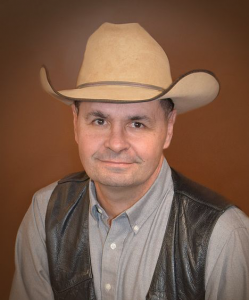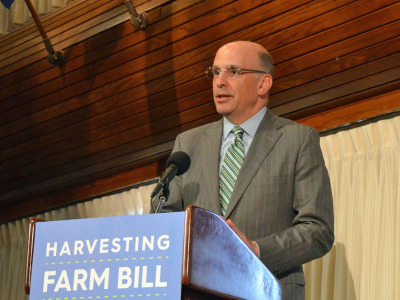USDA is rolling out its debt relief program for socially disadvantaged farmers, sending out offer letters to producers eligible for direct loan relief, even as it grapples with how to pay off guaranteed loans in the face of concerns from banks worried about loss of income.
The American Rescue Plan allocated $4 billion for the debt relief plan but USDA can go above that amount. The legislation says the department can spend “such sums as may be necessary” under the program, which offers 120% debt relief.
The extra 20% is to pay taxes on the payments, and Farm Service Agency Administrator Zach Ducheneaux says USDA plans to partner with local community groups to offer free tax advice to producers.
According to USDA, there are about 14,400 SDA borrowers with about $2.7 billion in debt, as well as another $400-million-plus that is delinquent. More than 80% of the borrowers hold direct loans and account for about 65% of the debt — about $2 billion. The rest, guaranteed lenders, have about $1 billion.
Meanwhile, FSA is finding that more producers than are on the books as qualifying as socially disadvantaged are coming forward to collect the payouts.
The department does not have exact figures on the number of growers who have done so, but Ducheneaux and others involved in the process said they aren’t surprised, given the history of discrimination faced by farmers of color.
Ducheneaux said the fact that producers did not check the appropriate box on their AD-2047 in the past will not be held against them. Instead, they will be able to check that box now to show they are eligible for the payouts.

FSA Administrator Zach Ducheneaux
“If they make that designation, they will receive an offer letter,” Ducheneaux said. “They will have to affix their signature attesting to that in that offer letter.”
“The department overall and the Farm Service Agency have a policy of trusting the farmer,” he said.
A USDA spokesman elaborated on the issue. "As all loan recipients know, when you sign a document for a loan of any kind, it is a legal document that carries with it an obligation under the law. In addition to the normal FSA due diligence on all loan programs, Section 1006 of the [American Rescue Plan] provides $5 million to the USDA Office of the Inspector General to run oversight over how the funds were disbursed as directed by the law. We expect and anticipate the OIG to carry out its duties."
Ducheneaux cited a VICE News story from earlier this month on the debt relief program that featured comments from a Louisiana FSA county commissioner opposed to the debt relief program who said minority borrowers are in debt “because they spend their money on other things. Their priorities might not be right.”
“Imagine that you could pass for white and that’s the environment that you're working in,” Ducheneaux said. “You bet your bottom dollar you're not going to check the African American or American Indian box.”
“That's the reality that we're trying to overcome,” he said. “And that's why we've been very welcoming from the beginning. Come in, update your AD-2047. We've put it on our website.”
Banks, however, are worried about losing anticipated income from interest payments on USDA-guaranteed loans when they are suddenly paid off. In a letter sent last month to Ag Secretary Tom Vilsack, they asked for reimbursement for lost future income.
“If USDA does not compensate lenders for such disruptions or avoid sudden loan payoffs, the likely result will be less access to credit for those seeking USDA guaranteed loans in the future, including SDA farmers/ranchers,” the American Bankers Association, Independent Community Bankers of America and the National Rural Lenders Association said in the letter. They also expressed concern about harm to secondary markets — the brokers and loan aggregators who buy and trade loans from the banks.
“We’re just saying, look at the consequences, recognize there are going to be some costs … and provide compensation to lenders so we're not harmed, because some of them have made huge commitments to serving minority borrowers and young, beginning small farmers through the use of the Guaranteed Loan Program,” Mark Scanlan, senior vice president of agriculture and rural policy at ICBA, told Agri-Pulse.
“USDA has the flexibility to ensure that lenders are not harmed in the way that this program is implemented,” he said, emphasizing that bankers are simply “making suggestions to USDA on implementation,” not threatening to cut off lending to socially disadvantaged farmers.

Mark Scanlan, ICBA
“Lenders are going to look at how this program is handled and see how much involvement they want to have in these programs — not [just] to socially disadvantaged farmers, but the guaranteed program overall,” he said.
Interested in more news on farm programs, trade and rural issues? Sign up for a four-week free trial to Agri-Pulse. You’ll receive our content - absolutely free - during the trial period.
He cited the example — also mentioned in the materials sent to USDA — of a bank in Georgia with a portfolio of more than $200 million in loans to socially disadvantaged farmers. Losing that amount of loans would require the bank to adopt “a completely different business plan.”
Ducheneaux says the banks are “an essential partner” in making loans to farmers “because we don't have the budget authority, as we operate right now, to serve all of the credit needs that exist out there in farming and ranching.” FSA has been educating itself “to better understand what the relationship is like between the guaranteed lenders and the borrowers,” as well as the bankers' concern about the secondary markets.
“When liquidity gets tight, lenders tend to sell a lot of these loans into the secondary market,” Scanlan says, replenishing the banks’ cash flow.
“We've got to have a relationship with the banks and we're confident that we will not be shaking the confidence of the guarantee on the secondary market with our efforts,” Ducheneaux said.
In addition, regarding the concern about "sudden" payouts, he says, “It’s not like you're not getting no money. You're getting money. You’re just getting it earlier than you would like, which I guess is a planning issue.”
Bankers will benefit, he says. “Every one of these banks will have a customer who has been substantially made whole, who will have assets that are free to pledge for new loans,” he says. “The bank can turn right around and make them an operating loan for next year, which usually has a higher rate of return than those term loans anyway.”
Scanlan, however, says “it’s the sudden, dramatic impact” of the payout that is of concern. “All of a sudden, you've removed $200 million from your business plan of assets that are earning new money.” One possible impact, he says: “You don't need the staff that you used to have to manage that.” And, especially for bankers in rural areas, it will be hard to make up that volume.
“If you were a farmer, and you had a couple thousand acres, and all of a sudden you had a 30% loss of your farm, that would be pretty significant,” Scanlan says.
The bankers want USDA “to look at those implications and do some calculations. Lenders have said they're willing to meet with USDA.”
He also stresses that the banks believe USDA has the statutory authority to make lenders whole. “USDA said they can establish a carbon bank through the CCC,” he says. “They certainly have the authority to do something like this, which should be fairly simple and easy to do. And in this case, we're talking about banks that have significant amounts of these loans.”
Ducheneaux says USDA has gotten information back from lenders on SDA loans “so we can get ready to roll that second [Notice of Funding Availability] out and deal with our Guaranteed Loan customers as well.” The Notice of Funds Availability on the direct loan debt payouts said the NOFA for the guaranteed loan portion of the program would go out within 120 days.
He also said the department is not deviating from its plan to make lump-sum payments as opposed to sending the payments out over time, as suggested by the bankers.
“We are the Farm Service Agency, and we are going to put the farmer first,” Ducheneaux said.
He also noted that USDA has agreed to pay any prepayment penalties, but Scanlan says that’s “not really an issue” because they “only apply to a small percentage of loans that banks made.”
Todd Van Hoose, president and CEO of the Farm Credit Council, the trade association for the Farm Credit System, says it hasn’t been involved with the bankers’ efforts.
“We hear where they're coming from, but we're a little bit different,” he said. “We're owned by our customers, and we’re going to operate in their interests.”
Van Hoose says, “We're telling Administrator Ducheneaux and his team, essentially, just ask us for a payoff statement.”
But he also notes that paying off the guaranteed loans can be a complex exercise.
“Some are annual-pay farm mortgage loans, which are fairly easy to calculate," but some are lines of credit, which can be difficult to calculate with planting season going on and purchases of seeds and inputs,” he says.

Todd Van Hoose, Farm Credit Council
Growers are “drawing on their credit lines like they're supposed to,” he says. “And so the numbers of how much somebody owes change all the time,” making the guaranteed portion of the program “fairly complex.”
The bankers’ arguments don’t sit well with John Boyd, head of the National Black Famers Association.
“It’s not a priority for the National Black Farmers Association, I’ll be honest with you,” Boyd said when asked if the banks should get some type of reimbursement.
“I think it was the wrong time” for bankers to be saying, “Hey, we need to make some more money off of this,” he said. “That's my personal opinion.”
He also emphasized, however, that he has no problem with white farmers receiving benefits from farm programs. “I want to say this because it's not making it into the stories,” he said. “I don't have a problem with white farmers getting the money. They deserve any kind of loan or benefit that the country has to offer.” The issue, he said, is accessibility.
“We have the best agricultural programs available in the world, but they’re not reaching Black farmers. That’s the problem,” said Boyd, who has been urging USDA to speed up its debt relief efforts.
Ducheneaux says he agrees with Boyd in that “we've got to get this done sooner rather than later.”
For more news, go to www.Agri-Pulse.com.


